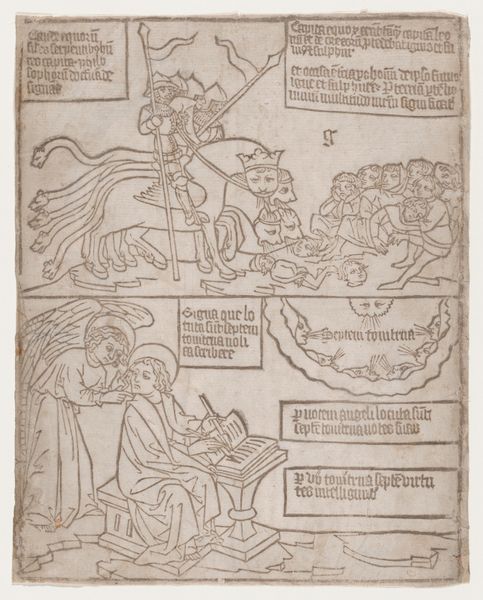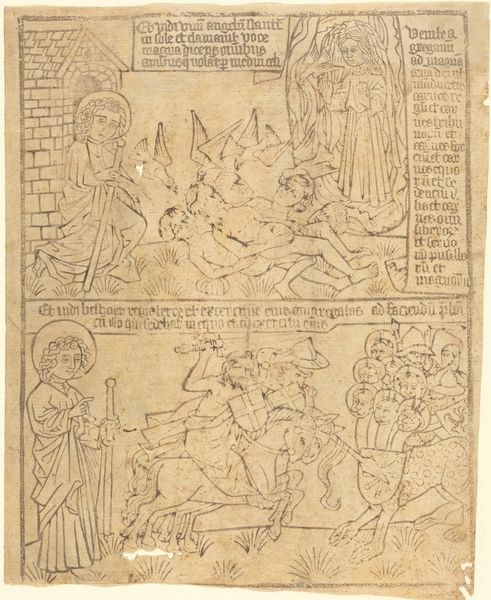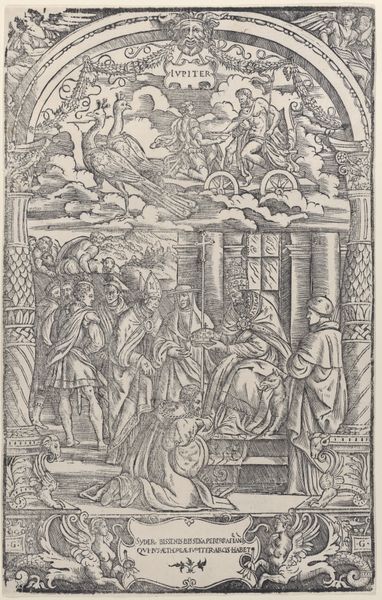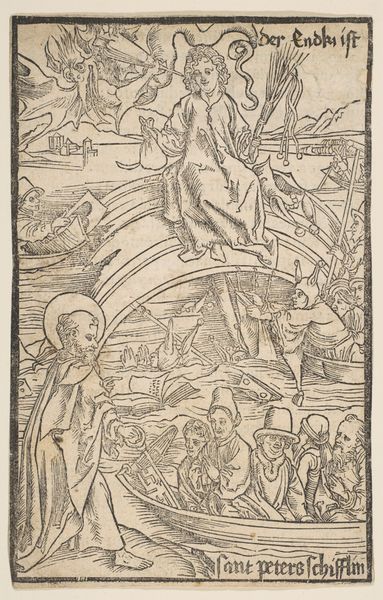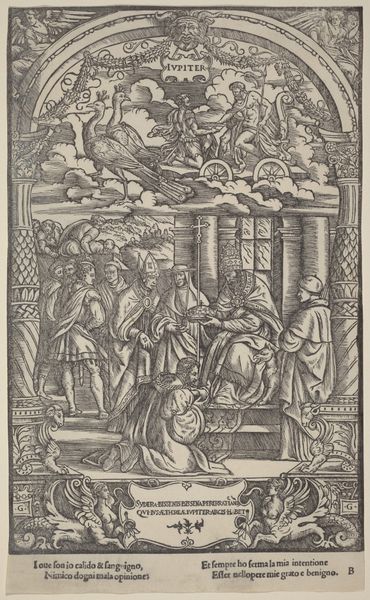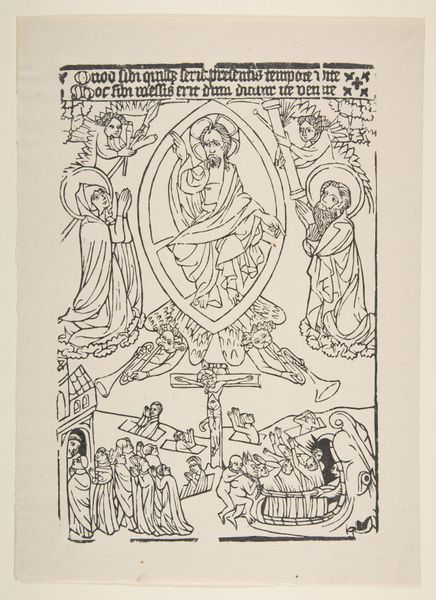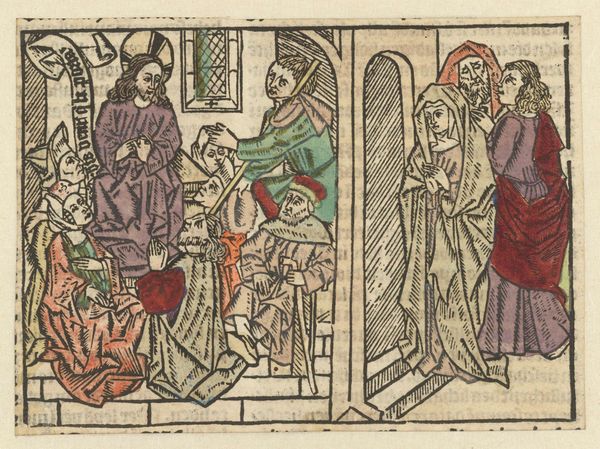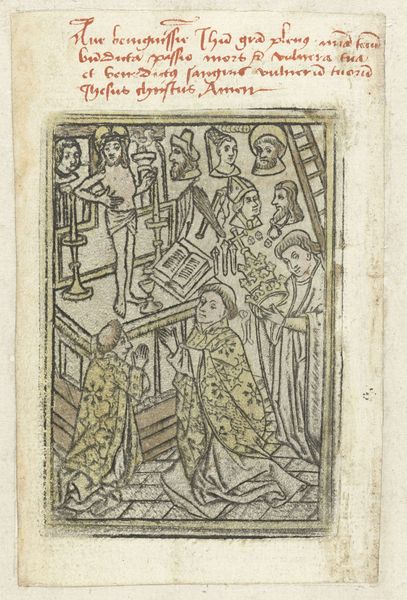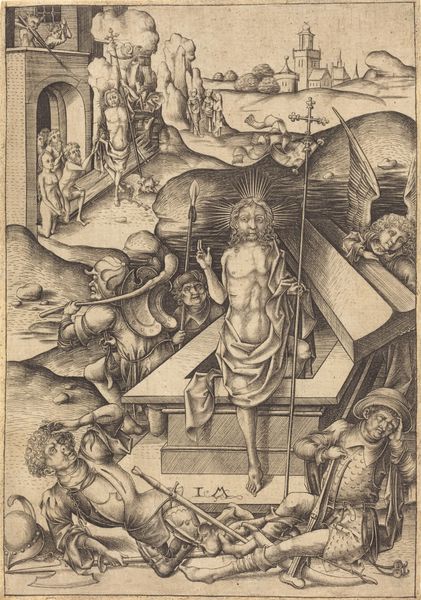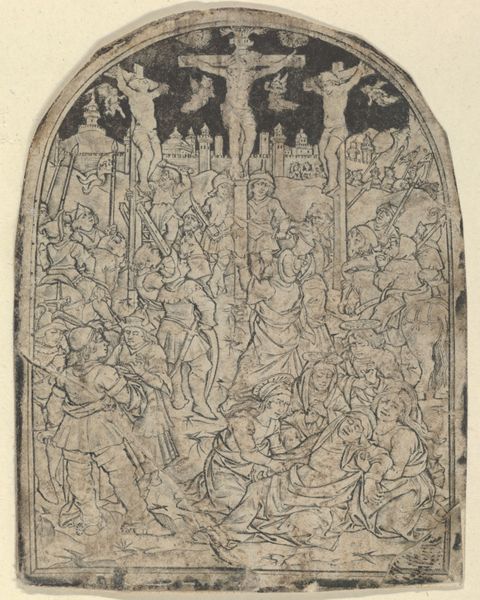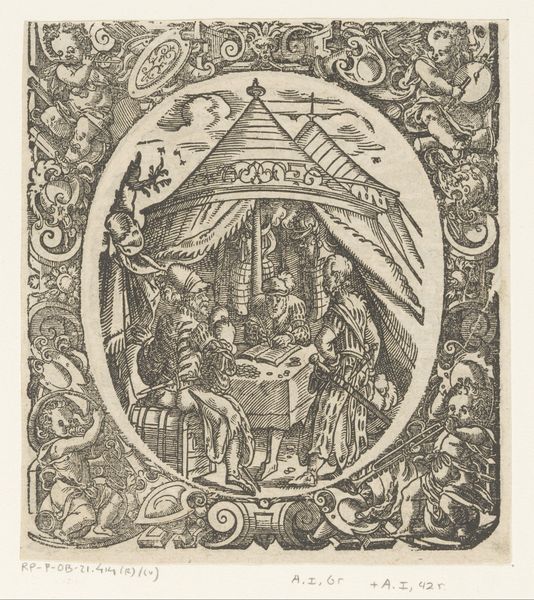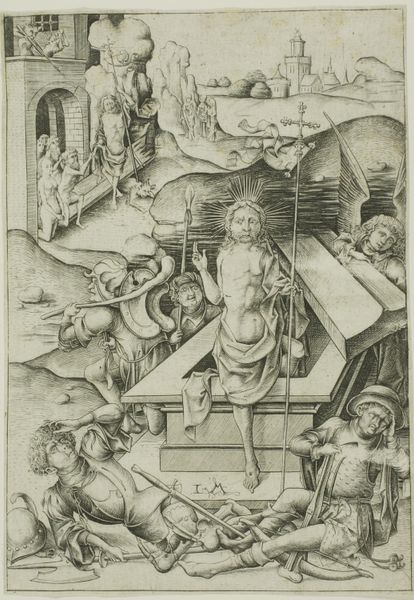
Antichrist Condemns Enoch and Elias to Death c. 1469 - 1470
0:00
0:00
print, woodcut
#
medieval
#
narrative-art
# print
#
figuration
#
woodcut
#
line
#
history-painting
#
international-gothic
Dimensions: image, sheet: 10 9/16 x 8 1/4 in. (26.83 x 20.96 cm)
Copyright: Public Domain
Curator: Well, this piece has some real drama simmering just beneath the surface. "Antichrist Condemns Enoch and Elias to Death," a woodcut dating back to 1469 or 1470. I imagine its creator probably never conceived that centuries later, people like us would puzzle over its message at the Minneapolis Institute of Art. Editor: That’s some first impression. I immediately get this sort of blunt force feel about it—a primal sense of order and punishment handed down—that maybe the style adds to—a very intense but graphic presentation of death and doom. The high contrast is unnerving, almost… theatrical? Curator: Precisely! That’s what makes it resonate for me too—it’s stark and uncompromising, as though morality can be rendered so black and white. Look at how each figure is so explicitly delineated; even the lettering reinforces the division. Considering the context, prints like these would have been disseminated relatively widely. Imagine ordinary folks interpreting these potent, symbolic narratives. Editor: It’s really interesting how these narrative devices are set out for us as these really overt morality lessons—but I wonder how it might be also seen in light of very violent realities that shaped the pre-Reformation mindset? This image doesn’t just warn against sin, but legitimizes brutal authority and reinforces really patriarchal power structures, using religion to do so. Curator: Absolutely. And what makes this example interesting too is the sense of compressed perspective. There are two sequential scenes, divided horizontally across one print. You have this Antichrist figure at the top, looking like a puffed-up little dictator, presiding over the execution. Then you see other clerical figures authorizing another round of executions in the bottom panel! It’s like a propaganda leaflet designed to intimidate the public, which, of course, given its time, it most likely was! Editor: But the point of propaganda, however grotesque and forceful, is that it needs to appeal. And what does that mean in a cultural context steeped in the traditions of that period? When looking back now, what kind of visual grammar were they counting on? Curator: Perhaps the fact that you could fit all this 'information' on a piece of paper small enough to carry and share gave it a kind of authority, don’t you think? The scale somehow contributes to its punch, maybe? The level of minute details and visual intensity can be taken in, examined, and remembered, because in its form, it too becomes like a commandment or law…a doctrine almost? Editor: This conversation leaves me with a newfound appreciation for how much context informs not only understanding art history but also what this woodcut says about the political context it originated from! It highlights the precarious relationship between religion and power, between visual culture and social control, even now. Curator: Indeed. And maybe there's a quiet reminder here: that even the simplest forms can harbor complexities that reward close and thoughtful consideration. Or not! Who am I to tell you how to see this stuff, eh?
Comments
No comments
Be the first to comment and join the conversation on the ultimate creative platform.
